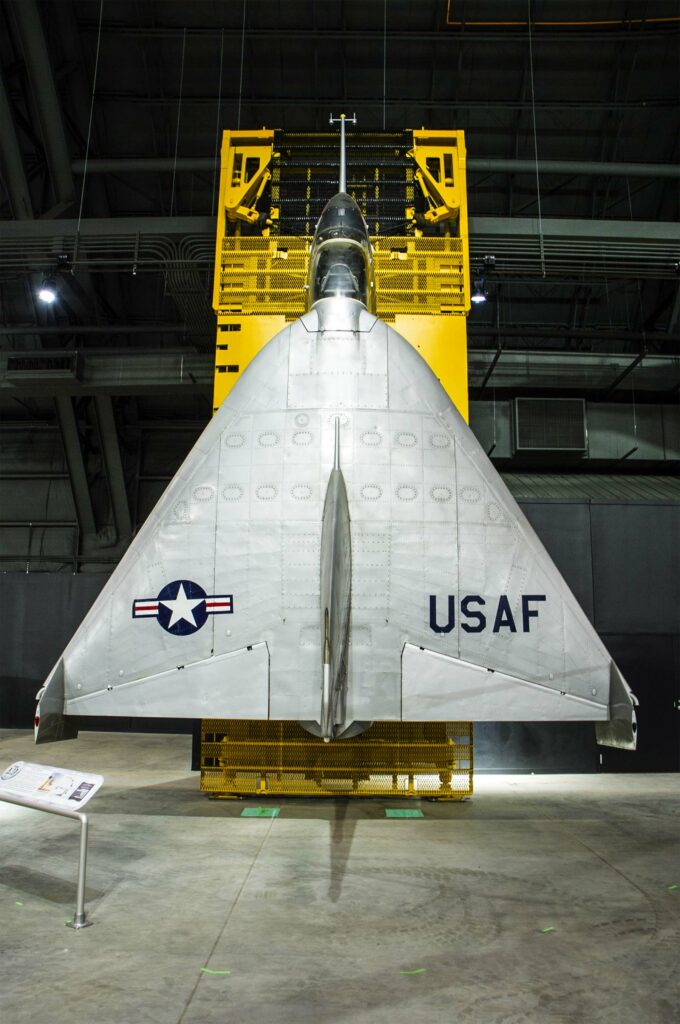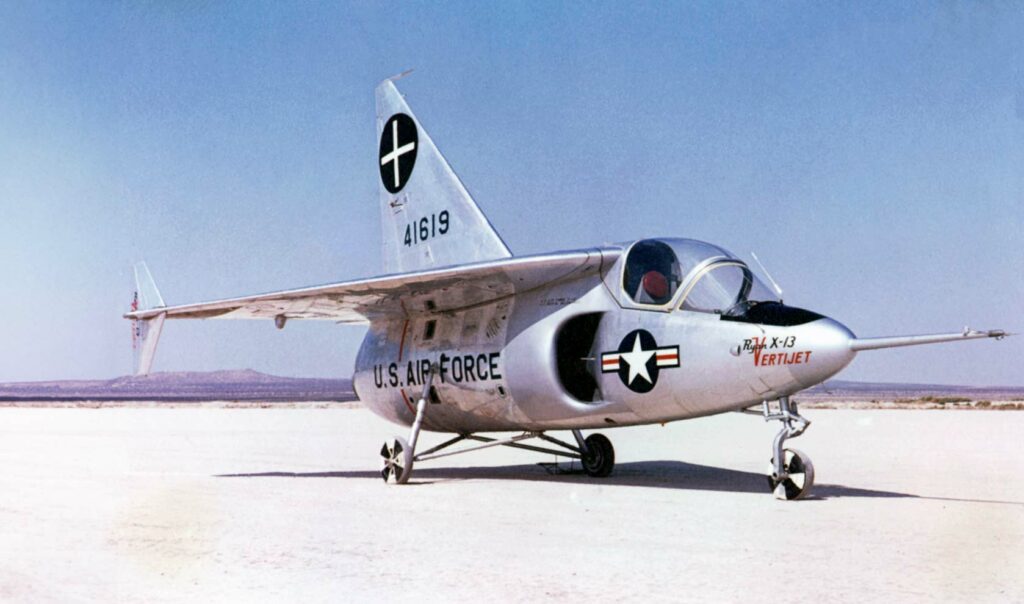The Ryan X-13 Vertijet was a pioneering VTOL (Vertical Take-Off and Landing) jet aircraft, designed for unique vertical takeoff capability.
In brief
The Ryan X-13 Vertijet was an experimental aircraft developed in the 1950s to explore the possibilities of vertical take-off and landing (VTOL) in jet-powered flight. This innovative design allowed the X-13 to take off and land vertically, transitioning to horizontal flight while in the air. Its development represented a significant technological endeavor, aiming to provide new capabilities for jet aircraft, especially in environments where traditional runways were unavailable. Although the X-13 never progressed beyond the experimental stage, it contributed valuable insights into VTOL technology and influenced future aircraft designs in this field.
The Ryan X-13 Vertijet stands as a remarkable example of mid-20th-century aviation experimentation, pushing the boundaries of conventional aircraft design and capabilities.

History of the Development of the Ryan X-13 Vertijet
In the 1950s, as the Cold War intensified, there was a growing interest in developing aircraft that could operate from confined spaces without the need for long runways. This interest was driven by the strategic necessity of ensuring air power was resilient to runway denial tactics.
The X-13 program was initiated by Ryan Aeronautical Company. The primary objective was to develop a jet aircraft capable of vertical takeoff and landing, exploring a new realm in jet propulsion and aerodynamics.
The X-13 Vertijet first took to the skies on December 10, 1955. The development process was marked by significant challenges and innovations, particularly in mastering the transition between vertical and horizontal flight.
The X-13 was a bold venture into uncharted territories of aviation. It reflected the innovative spirit of the era and contributed to the broader understanding of VTOL technologies.
Design of the Ryan X-13 Vertijet
The design of the X-13 was unique, featuring a delta wing and a single Rolls-Royce Avon turbojet engine with thrust vectoring capabilities. The aircraft had a length of 7.77 meters and a wingspan of 6.40 meters.
The VTOL capability was a significant advantage, allowing operation in confined spaces. However, the design posed challenges in stability and control, particularly during the transition between vertical and horizontal flight.
The X-13’s design and successful demonstration of VTOL capabilities were pivotal in advancing understanding in this area, setting the stage for future VTOL aircraft.
Performance of the Ryan X-13 Vertijet
The X-13 was powered by a Rolls-Royce RA.28 Avon turbojet, producing a thrust sufficient for its vertical takeoff and landing. It achieved a maximum speed of around 560 mph and a service ceiling above 20,000 feet.
Compared to other aircraft of the time, the X-13 was unique in its VTOL capabilities. While it couldn’t match the speed or range of conventional jets, its vertical takeoff and landing capability set it apart.
Variants of the Ryan X-13 Vertijet
The X-13 program produced two prototypes, each contributing to different phases of the testing and development process. These variants were primarily used to refine the VTOL technology and transition flight characteristics.

Military Use and Combat of the Ryan X-13 Vertijet
The X-13 was purely experimental and did not see actual combat or enter military service. Its development was primarily focused on testing and proving the VTOL concept rather than operational deployment.
The X-13 never progressed beyond the experimental stage and was not sold to any country. Its primary role was to serve as a testbed for VTOL technology, influencing later designs rather than participating in military operations.
The Ryan X-13 Vertijet was a significant experimental step in aviation history. While it did not enter production or combat, its contributions to VTOL technology were invaluable. The X-13 showcased the potential and challenges of vertical takeoff and landing, paving the way for future innovations in this field and expanding the possibilities of jet-powered flight.
Back to the experimental aircraft section.